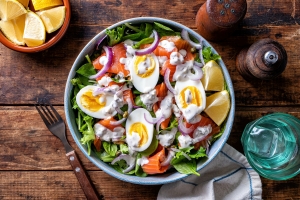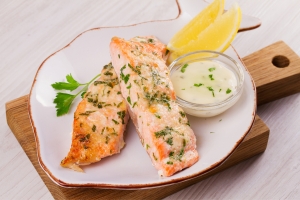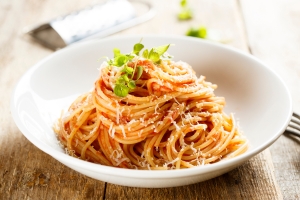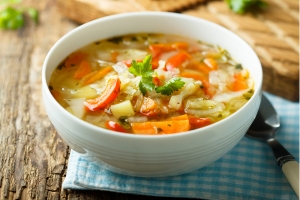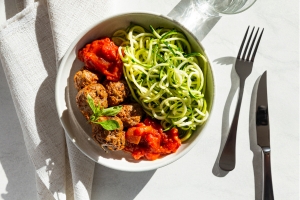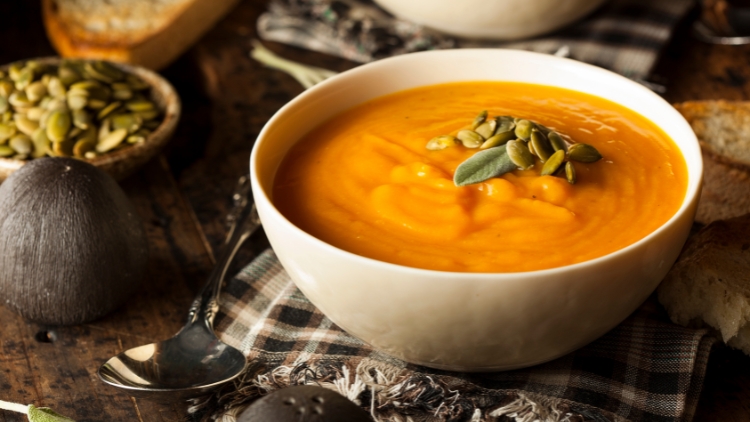So, you’re embarking on a low-carb journey, and you might be picturing a plate perpetually filled with nothing but meat and cheese. Think again! One of the biggest misconceptions about low-carb eating is that it limits your vegetable intake. In reality, a well-planned low-carb lifestyle embraces a wide variety of delicious and nutritious vegetables. I’ve experienced this firsthand, and I’m excited to share my top 25 low-carb vegetable picks, along with creative ways to prepare them and insights into why they’re so good for you.
Forget the idea of bland, boring meals. We’re about to explore a world of vibrant colors, exciting textures, and satisfying flavors, all while keeping those carbs in check.
Leafy Greens: Your Low-Carb Superstars

These are your everyday essentials. They’re incredibly low in carbs, packed with vitamins and minerals, and incredibly versatile.
Spinach: (approx. 0.4g net carbs per cup, raw) Popeye was a genius! Spinach is a nutritional powerhouse, loaded with vitamin K, which is crucial for blood clotting and bone health (especially important for those on keto, as it can sometimes affect bone density), vitamin A for vision and immune function, and folate for cell growth. Use it raw in salads, blend it into smoothies for a nutrient boost, add it to omelets, or sauté it with garlic and a touch of olive oil for a quick and healthy side dish.
Kale: (approx. 0.8g net carbs per cup, raw) This slightly bitter green boasts impressive levels of vitamins A, C, and K. Vitamin C is a powerful antioxidant that supports immune function, while vitamin K plays a role in bone health. Massage it with a little olive oil and lemon juice to tenderize it for salads, add it to hearty soups and stews, or even bake it into crispy kale chips for a healthy snack.
Romaine Lettuce: (approx. 0.5g net carbs per cup, shredded) Crisp and refreshing, romaine is the perfect base for a classic Caesar salad. The high water content helps with hydration. You can also use the large leaves as low-carb “wraps” for your favorite fillings (think tuna salad or grilled chicken), or even try grilling it for a smoky flavor.
Arugula (Rocket): (approx. 0.4g net carbs per cup) This peppery green adds a zesty kick to any salad. It’s a good source of nitrates, which may help improve blood flow. It’s also delicious when blended into a vibrant pesto, or used as a sophisticated pizza topping after baking to preserve its peppery bite.
Swiss Chard: (approx. 0.8g net carbs per cup, raw) With its colorful stems and vibrant leaves, Swiss Chard is as beautiful as it is nutritious. It provides vitamins A, C, and K, as well as magnesium and potassium, which are essential for maintaining healthy blood pressure. Sauté it with garlic and red pepper flakes for a flavorful side dish, or add it to a frittata.
Collard Greens: (approx. 3.1g net carbs per cup, cooked) A staple in Southern cooking, collard greens are traditionally slow-cooked with smoked meat. They’re a good source of fiber, which aids digestion, and calcium, crucial for strong bones. Try braising them with apple cider vinegar and a touch of smoked paprika for a modern, flavorful twist.
Bok Choy: (approx. 0.8g net carbs per cup, chopped, raw) This mild-flavored Asian green is excellent when quickly stir-fried with ginger, garlic, and soy sauce (or tamari for gluten-free). It provides vitamin C and vitamin K. Try adding it to a quick weeknight stir-fry with shrimp or chicken for a complete meal.
Cruciferous Vegetables: Flavor and Fiber Powerhouses

These veggies are known for their distinctive flavors (sometimes a little pungent!) and their impressive health benefits, including potential cancer-fighting properties due to their glucosinolate compounds.
Broccoli: (approx. 3.6g net carbs per cup, chopped, raw) This versatile veggie is a good source of fiber, which helps you feel full and satisfied, and vitamins C and K. Roast it until crispy with olive oil and your favorite spices, steam it until tender-crisp, stir-fry it with your favorite protein, or even finely chop it and use it as a base for a low-carb “rice.”
Cauliflower: (approx. 3.2g net carbs per cup, chopped, raw) The chameleon of the low-carb world! Cauliflower’s mild flavor makes it incredibly adaptable. Rice it and use it as a substitute for rice in any dish, mash it like potatoes for a comforting side, roast it until golden brown and caramelized, or even blend it into a creamy, dairy-free soup. It’s a great source of vitamin C and choline.
Cabbage: (approx. 1.9g net carbs per cup, shredded, raw) Whether it’s green, red, or Savoy, cabbage is a low-carb staple. Use it in crunchy slaws (perfect for topping tacos!), flavorful stir-fries, or comforting soups. Red cabbage is particularly high in anthocyanins, powerful antioxidants.
Brussels Sprouts: (approx. 4.6g net carbs per cup, halved, raw) These mini cabbages are having a culinary renaissance. Roasted with a little olive oil, salt, and pepper until crispy and caramelized, they’re absolutely addictive. For a unique twist, try shredding them raw and using them in a salad with a lemon vinaigrette. They provide fiber and vitamin C.
Radishes: (approx. 1.9g net carbs per cup, sliced, raw) These peppery root vegetables add a delightful crunch and a spicy kick to salads. Try roasting them to mellow their flavor and bring out their natural sweetness. Roasting transforms their texture, making them surprisingly tender.
Other Delicious Low-Carb Veggies

Let’s round out our list with a diverse selection of other fantastic options:
Zucchini (Courgette): (approx. 2.6g net carbs per cup, sliced, raw) This summer squash is incredibly versatile. Use a spiralizer to make “zoodles” (zucchini noodles) as a pasta substitute, add it to stir-fries, grate it into fritters, or even bake it into low-carb muffins for a hidden dose of veggies.
Asparagus: (approx. 2.4g net carbs per cup, raw) This elegant vegetable is delicious grilled, roasted, steamed, or even pickled. It’s a good source of folate, which is important for cell growth and development. Try wrapping it in prosciutto for a savory appetizer, or add it to a frittata.
Green Beans: (approx. 4.3g net carbs per cup, raw) A classic side dish, green beans are also great in salads. Blanch them quickly for a vibrant green color and a crisp-tender texture, or try roasting them with garlic and Parmesan cheese for a more intense flavor.
Bell Peppers (Capsicum): (Green: approx. 4.5g; Red: 6.0g; Yellow: 6.5g net carbs per cup, chopped, raw) While all bell peppers are relatively low in carbs, green peppers have the lowest carb count. They add color, crunch, and sweetness to stir-fries, salads, and fajitas. Try stuffing them with a low-carb filling for a complete meal.
Mushrooms: (approx. 1.6g net carbs per cup, sliced, raw, white button) These fungi add a savory, umami flavor to dishes. Sauté them with butter and garlic, add them to omelets, or roast them until they’re intensely flavorful. For a crispy snack, try dehydrating sliced mushrooms in a low oven to create mushroom “chips.”
Eggplant (Aubergine): (approx. 2.3g net carbs per cup, cubed, raw) This meaty vegetable is fantastic grilled, roasted, or used in dishes like baba ghanoush (a smoky eggplant dip) or ratatouille. Try using slices of eggplant as a substitute for lasagna noodles in a low-carb lasagna.
Cucumbers: (approx. 2.8g net carbs per cup, sliced, with peel) Refreshing and hydrating, cucumbers are perfect for salads, snacks, or infused water. Their high water content makes them a great choice for hot days, and they contribute to overall hydration.
Celery: (approx. 1.4g net carb per cup, chopped) This crunchy vegetable is a classic low-carb snack. Dip it in almond butter, cream cheese, or guacamole for a satisfying treat. It also adds a subtle, savory flavor to soups and stews.
Tomatoes: (approx. 4.0g net carbs per cup, cherry tomatoes, raw) Although technically a fruit, tomatoes are often used as vegetables. Limit your intake, as they do contain some carbs, but they’re a good source of lycopene, a powerful antioxidant linked to reduced risk of certain cancers. Cherry tomatoes are a great snack option, or add them to salads and sauces.
Okra: (approx. 4.3g net carbs per cup, sliced, raw) A staple in Southern and Creole cuisine, okra can be fried (using low-carb breading like almond flour), roasted, pickled, or added to gumbo. It has a unique texture and flavor, and it contains mucilage, a soluble fiber that can help regulate blood sugar.
Turnips: (approx. 6.0g net carbs per cup, cubed, raw) These root vegetables are a surprisingly good low-carb substitute for potatoes. Roast them with herbs and spices, mash them with butter and cream cheese, or even grind them with almonds to create a low-carb “breadcrumb” coating for chicken or fish.
Jalapeños: (approx. 0.5g net carb per pepper, raw) Add a spicy kick to your meals with these chili peppers. Use them in moderation, as their heat can vary. They contain capsaicin, which may have metabolism-boosting properties.
Olives: (approx. 1.0g net carbs per 10 small olives) These salty, briny fruits are a great source of healthy fats and antioxidants. Add them to salads, tapenades, or enjoy them as a simple, satisfying snack.
Why These Veggies are Low-Carb Champions
The secret lies in their low net carb content. “Net carbs” are calculated by subtracting the grams of fiber from the total grams of carbohydrates. Fiber is a type of carbohydrate that your body doesn’t digest, so it doesn’t raise your blood sugar levels in the same way as digestible carbs. These vegetables are generally high in fiber and low in digestible carbs, making them perfectly suited for a low-carb lifestyle. They also deliver a wealth of essential vitamins, minerals, and antioxidants, all vital for overall health and well-being.
How to Choose the Best Low-Carb Vegetables
- Go for Color: The more vibrant the color, the higher the concentration of antioxidants and phytonutrients. Think deep greens, bright reds, and rich purples.
- Shop Seasonally: In-season produce is typically fresher, tastier, and more affordable.
- Choose Fresh Over Frozen (When Possible): While frozen vegetables are a convenient option, fresh vegetables often have a better texture and flavor.
- Avoid Canned Vegetables with Added Sugar or Salt: Always check the labels carefully.
- Organic (Optional): If your budget allows, consider buying organic vegetables to reduce your exposure to pesticides.
Low-Carb Vegetable Quick Comparison Table
| Vegetable | Net Carbs (per cup, approx., raw unless stated) | Best Uses |
|---|---|---|
| Leafy Greens: | ||
| Spinach | 0.4g | Salads, smoothies, omelets, sautéed dishes |
| Kale | 0.8g | Salads (massaged), soups, stews, chips |
| Romaine Lettuce | 0.5g | Salads, wraps, grilled |
| Arugula | 0.4g | Salads, pesto, pizza topping (after baking) |
| Swiss Chard | 0.8g | Sautéed dishes, frittatas |
| Collard Greens | 3.1g (cooked) | Braised, stews |
| Bok Choy | 0.8g | Stir-fries, soups |
| Cruciferous: | ||
| Broccoli | 3.6g | Roasted, steamed, stir-fried, raw, “rice” |
| Cauliflower | 3.2g | Riced, mashed, roasted, soups |
| Cabbage | 1.9g | Slaws, stir-fries, soups |
| Brussels Sprouts | 4.6g | Roasted, shredded in salads |
| Radishes | 1.9g | Salads, roasted |
| Other: | ||
| Zucchini | 2.6g | Zoodles, stir-fries, fritters, muffins |
| Asparagus | 2.4g | Grilled, roasted, steamed, pickled, appetizers |
| Green Beans | 4.3g | Salads, blanched, roasted |
| Bell Peppers (Green) | 4.5g | Stir-fries, salads, fajitas, stuffed |
| Bell Peppers (Red) | 6.0g | Stir-fries, salads, fajitas, stuffed |
| Bell Peppers (Yellow) | 6.5g | Stir-fries, salads, fajitas, stuffed |
| Mushrooms | 1.6g | Sautéed, omelets, roasted, chips |
| Eggplant | 2.3g | Grilled, roasted, baba ghanoush, ratatouille, lasagna substitute |
| Cucumbers | 2.8g | Salads, snacks, infused water |
| Celery | 1.4g | Snacks, soups, stews |
| Tomatoes (Cherry) | 4.0g | Salads, snacks, sauces |
| Okra | 4.3g | Fried (low-carb breading), roasted, pickled, gumbo |
| Turnips | 6.0g | Roasted, mashed, “breadcrumb” coating |
| Jalapeños | 0.5g (per pepper) | Adds spice to various dishes |
| Olives | 1.0g (per 10 small olives) | Salads, tapenades, snacks |
The Takeaway
Eating low-carb doesn’t mean saying goodbye to delicious, nutritious vegetables. Embrace the abundance of low-carb options available, experiment with different cooking methods, and get creative in the kitchen! You might be surprised at the variety and flavor you can achieve while keeping your carb intake low. Remember, a colorful plate is often a healthy plate.
So, load up on these low-carb veggies and enjoy the journey! What’s your favorite low-carb vegetable recipe? Share it in the comments below! 🥗


